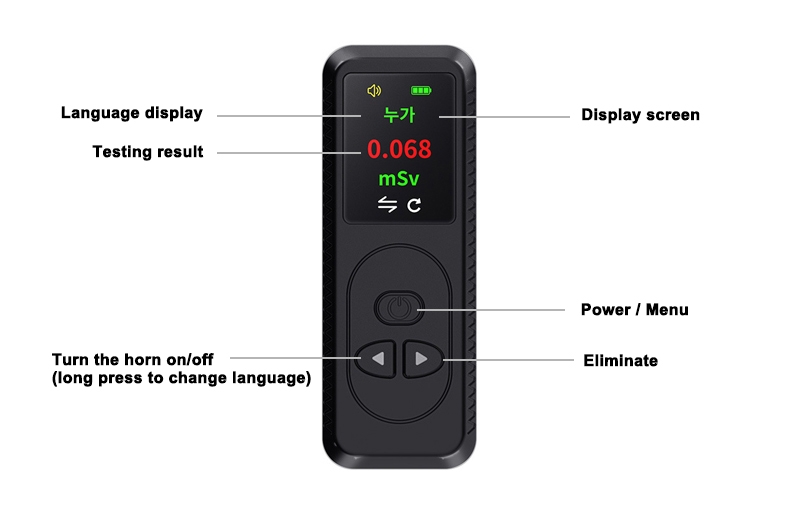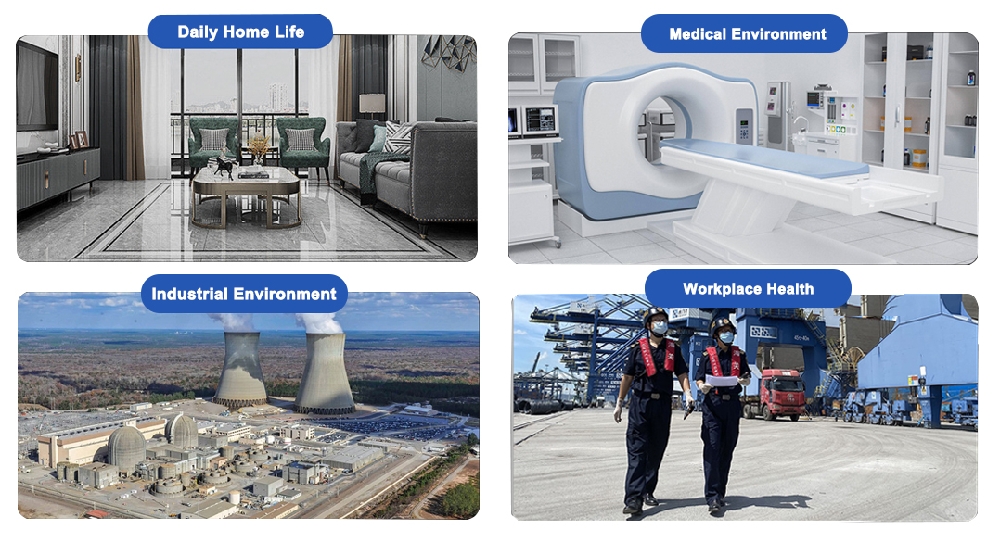Components that use ionization effects, luminescence, and physical or chemical changes induced by nuclear radiation in gases, liquids, or solids for the detection of nuclear radiation are called nuclear radiation detectors. To date, there are many types of nuclear radiation detectors for various applications, with different principles of operation. The information given by a nuclear radiation detector can directly or indirectly determine parameters such as the type, energy, intensity, or lifetime of nuclear radiation. sisco shop will present in detail the definitions, characteristics, fields of application, and importance of nuclear radiation detectors for the protection of mankind and the environment.
Definition
Nuclear radiation detectors, also known as nuclear detection elements, are devices used to detect radiation rays. Commonly used are ionization chambers, counting tubes and scintillation counters, atomic nucleus emulsions, solid nucleus path detectors, and semiconductor detectors. These nuclear radiation detection elements can measure radiation rays and their properties. The principle is mainly to utilize the multiple effects that occur when the rays interact with matter.
The operating principle of nuclear radiation detectors is based on the detection of particle or optical signals generated in the detector, which are then converted into readable counts or energy spectra using an electronic system to measure and analyze the intensity and spectral properties of nuclear radiation.
Structure
- Sensitive Detector: This is the core part of the detector and is used to capture radiation from a nuclear radiation source. The sensitive detector can be a semiconductor detector, a scintillation detector, a gas detector, or another type of detector depending on the application requirements.
- Photomultiplier Tube (PMT) or Photodiode: If a scintillation detector is used, a PMT or photodiode is usually required to capture the scintillation light and convert it into an electrical signal.
- Electronics Section: this includes preamplifiers, amplifiers, multichannel analyzers, and analog-to-digital converters (ADCs) to process and measure the signals collected from the sensitive detectors.

- Shield: This is used to minimize the effects of background radiation and ensure that only radiation from the target source is detected.
- Cooling System: Some sensitive detectors require a cooling system to maintain their temperature to improve performance and stability.
- Display and User Interface: A digital display is used to show the results of radiation measurements, usually in count rates, dose rates, or other units. Pushbuttons or knobs are used for user operations, such as activating the high precision nuclear radiation detector, selecting different modes or units, setting thresholds, and so on.
- Power Supply: Batteries or external power supplies provide electricity to power the various parts of the radiation detector, usually using rechargeable batteries or battery packs, or external AC power.
- Data Storage and Communication: Some radiation detectors have built-in data storage to record measurement data for subsequent analysis. Some advanced nuclear radiation detectors can communicate with a computer or mobile device via USB, Bluetooth, or Wi-Fi for real-time data transfer or remote monitoring.
- Alarm Systems: Nuclear radiation detectors usually have a built-in alarm system that triggers an audible or visual alarm when radiation levels exceed a set threshold, alerting the operator to take the necessary action.
- Enclosure and Shielding: Used to protect internal components and provide portability, often with a rugged design to suit a variety of working environments. Some detectors may require built-in or attachable radiation shielding to minimize the effects of external radiation on the measurement.
- Accessories and Fittings: Depending on the needs of a particular application, a variety of accessories and fittings may be available, such as detector holders, brackets, calibration sources, etc.
The construction and components of a nuclear radiation detector can vary depending on the application and performance requirements. For example, portable nuclear radiation detectors are usually designed to be lightweight and easily portable for field monitoring and emergency response, while those for laboratory use may be more sophisticated to meet the needs of scientific research. The main objective of nuclear radiation detectors is to provide accurate and reliable radiation measurements to ensure the safety of people and the environment.
Areas of Application
- Nuclear Industry: Nuclear radiation detectors are used in nuclear power plants and nuclear reactors to monitor radiation levels to ensure the safety of workers and the public. Nuclear radiation detectors help monitor radiation levels in reactors, as well as the status of nuclear fuel and leakage of radioactive material.
- Medical: Nuclear radiation detectors play a key role in medical diagnosis and treatment for radioisotope diagnosis, tumor therapy, and radiation therapy. Nuclear radiation detectors help doctors measure the radiation dose in the patient's body to ensure accurate treatment.
- Nuclear Material Detection: Nuclear radiation detectors are used for non-proliferation detection of nuclear materials, such as nuclear weapons monitoring and tracking of radiation sources. Nuclear radiation detectors help prevent the illegal spread of nuclear materials.
- Environmental Monitoring: Nuclear radiation detectors are used to monitor environmental radiation levels from natural and man-made sources to ensure public safety and environmental health.
- Industrial Applications: Nuclear radiation detectors are used in industry for material testing, food radiation detection, and radioactive pollution control.

Main Features
- High Sensitivity: Nuclear radiation detectors can detect very small amounts of nuclear radiation, making them very important in radiation monitoring and nuclear energy applications.
- Versatility: Nuclear radiation detectors are capable of detecting different types of nuclear radiation, including particle and electromagnetic radiation, with a wide range of applications, from medical and nuclear energy fields to radiation protection.
- Immediate Response: Nuclear radiation detectors can monitor radiation levels in real time, ensuring that control measures are taken promptly to minimize potential radiation hazards.
- Lightweight and portable: Modern nuclear radiation detectors are often designed to be lightweight and portable for field surveys and emergency response.
- Data Recording and Analysis: Many nuclear radiation detectors are capable of recording and analyzing detected radiation data for subsequent analysis and reporting.
- High Accuracy: Nuclear radiation detectors provide highly accurate measurements that help to accurately assess radiation risk and environmental radiation levels.
Nuclear radiation detectors are indispensable tools in the field of nuclear energy and radiation for the protection of mankind and the environment, for the advancement of scientific research, and for providing vital measurements and monitoring in medical and industrial applications. Through continuous technological innovation and research and development, nuclear radiation detectors will continue to play a key role in ensuring safety and efficiency in the nuclear field, as well as the successful implementation of other applications.

